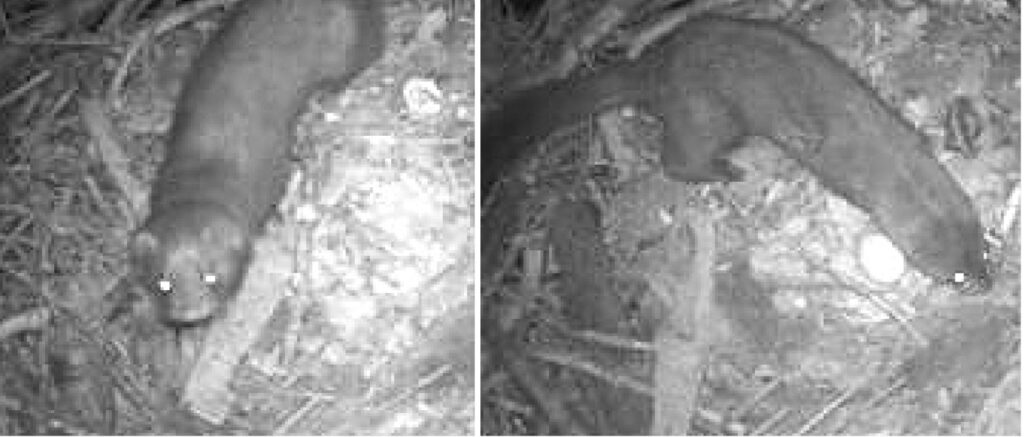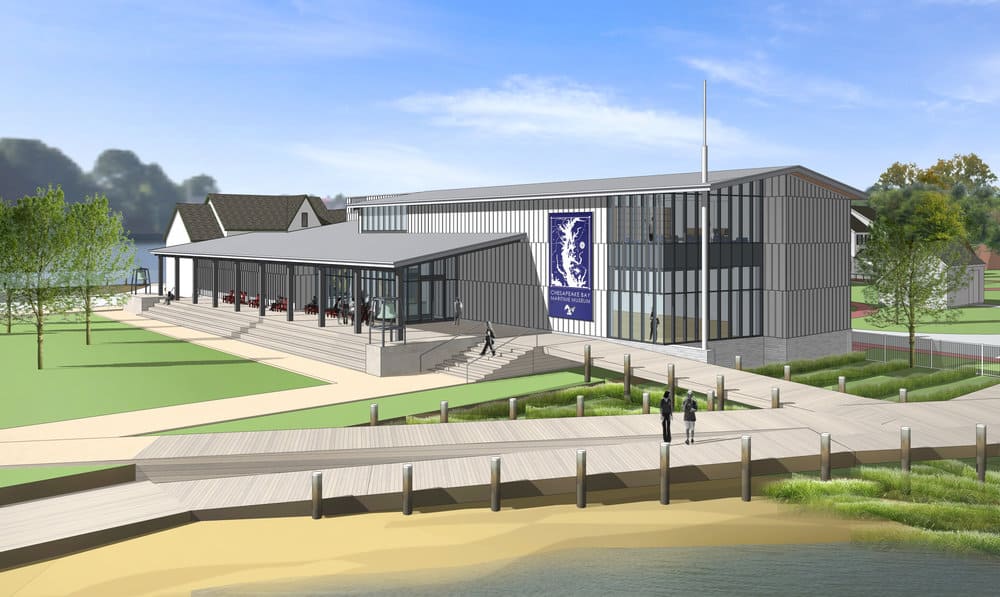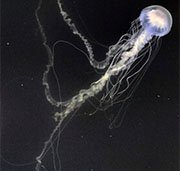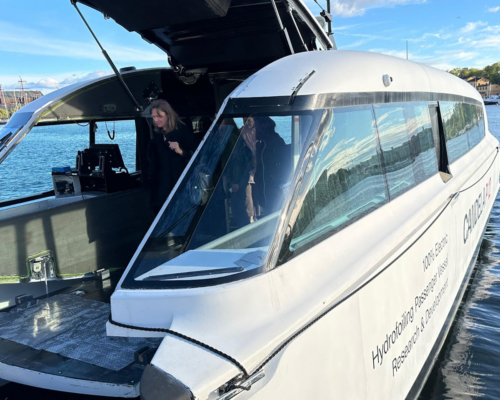Over the last few years, raptor observers have noticed a concerning decline in osprey nestlings along the Lynnhaven River. Eyewitnesses observed eagles, owls, and crows raiding nests on occasion.
Recently, questions have been raised about whether the drop may be linked to menhaden fishing inside the Bay. But another troublesome osprey nesting threat has just been discovered. A camera on an osprey platform in Virginia Beach recently captured a mink cleaning out a nest. It may be the first documented instance of a mink targeting an osprey nest platform in the area.
Mink are members of the weasel family. American minks don’t grow over 2.5 pounds or about 2 feet in length in the wild. Their luxurious brown fur was popular for coats in years past. They are cute, but they are vicious predators. They can swim well. They will venture far from the water to hunt, and they can even climb trees. They will readily attack and defeat larger prey. As carnivores, they eat eggs, fish, frogs, muskrats, rabbits, and apparently—baby ospreys.
Reese Lukei, Jr is a raptor expert with decades of experience working with The College of William and Mary’s Center for Conservation Biology. He says that after the old days of DDT, osprey enjoyed a successful comeback in the Lynnhaven River and were thriving as recently as five years ago. Unfortunately, that’s begun to change.
“DDT once diminished osprey populations everywhere,” Lukei said. “After DDT was banned, the first osprey returned to a nesting platform in the Lynnhaven in 1979. The number of successful nests grew. There was a peak of Lynnhaven nesting in 2019 with 102 nests counted. About half of those nests were on man made platforms. Nesting began to decline after that, and observers began to notice the disappearance of eggs and chicks from nests.”
Lukei and Keriann Pfleger from the Virginia Aquarium and Marine Science Center (VIMS) began to investigate. “We had eyewitness accounts of owls and eagles raiding osprey nests,” he said. “Crows can form a mob to attack a nest with devastating results.”
Part of their research involved installing cameras on osprey platforms. “Recently, we had a battery issue with a camera,” said Lukei. “When we approached the nest to check on the camera, the nest was empty. We saw no adults. One adult is usually nearby to guard a nest.”
They replaced the battery and checked the memory card. That is when they discovered that a mink had raided the nest. The mink had simply climbed from the water up the pole into the nest.
Lukei called the discovery astonishing. The researchers had no idea minks were raiding osprey nests. While it is too late to make adaptations for this season, Lukei said they will be making plans to address this next year. He noted that it has always been recommended that osprey platforms on land or in marshes be protected with stove pipe against predators. Predator’s claws cannot grasp the metal stove pipe like they can a wood pole. Lukei said they will be applying that advice for platforms in the water as well.
If you’ve never spotted a mink in the Chesapeake Bay region, you may be surprised to learn that the common mink is, well, common, near the water in central and eastern Virginia. They prefer forested, brushy areas that provide cover for dens, according to the Virginia Department of Wildlife Resources.
Minks are also found in Maryland, except for the Eastern Shore, Maryland Department of Natural Resources says. But if you do spot one, it’s best to give it a wide berth. Their personalities are described as “solitary and unsociable”.
It is legal to trap minks in Virginia and Maryland for trappers adhering to season limits and regulations.
Lynnhaven River Now, a nonprofit that seeks to protect and restore Virginia Beach waterways, was the first to publish this discovery. You can follow them on social media or at lynnhavenrivernow.org.




